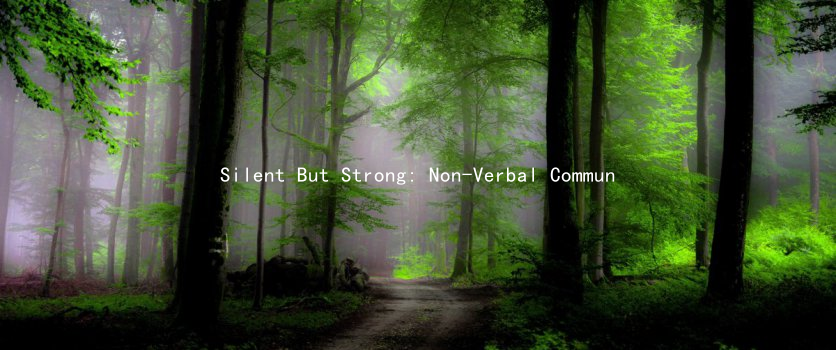Silent But Strong: Non-Verbal Communication Strategies for Couples
Silent But Strong: Non-Verbal Communication Strategies for Couples
In any relationship, communication is key. While verbal exchanges play an essential role in conveying thoughts and feelings, non-verbal communication often speaks volumes without a single word being uttered. For couples, understanding and mastering these silent but powerful cues can deepen connections, enhance intimacy, and resolve conflicts more effectively. Here are some non-verbal communication strategies that can help couples strengthen their bond.
1. Eye Contact: The Window to the Soul
Eye contact is one of the most potent forms of non-verbal communication. When partners maintain eye contact, it fosters trust and connection, signaling that they are engaged and interested in each other. However, it’s essential to strike a balance; too much eye contact can feel intimidating, while too little may come across as disinterest. Couples should aim for soft, steady eye contact during conversations to enhance intimacy and convey affection.
2. The Power of Touch
Physical touch is a fundamental aspect of human interaction, playing a crucial role in intimacy. Simple gestures like holding hands, hugs, or gentle touches on the arm can express affection and support without requiring any words. Research shows that physical touch can reduce stress and increase feelings of security in a relationship. Couples should make an effort to incorporate touch into their daily interactions, reinforcing their connection through non-verbal means.
3. Body Language: Posture and Proximity
Our body language can communicate emotions and attitudes just as clearly as words. Open and relaxed posture can convey receptiveness and warmth, while crossed arms may suggest defensiveness or unease. Additionally, the distance between partners matters; standing or sitting closer can signal intimacy and connection, while too much space might indicate a lack of interest or emotional distance. Couples should be mindful of their body language and strive to maintain an open stance and closer proximity during interactions to reinforce closeness.

4. Facial Expressions: The Unspoken Words
Facial expressions can relay a range of emotions, often more accurately than spoken language. A smile can convey joy and warmth, while a furrowed brow may indicate concern or confusion. Couples should cultivate an awareness of their own facial expressions and those of their partner, as being attuned to these signals helps in understanding each others feelings. Reacting appropriately to your partners expressions can foster empathy and connection, encouraging a deeper emotional bond.
5. Active Listening: More Than Just Hearing
While active listening often involves verbal affirmations, it also comprises non-verbal cues such as nodding, leaning slightly forward, and maintaining open body language. These gestures signal attentiveness and understanding. Couples should practice active listening by remaining present and showing engagement through their non-verbal responses, demonstrating to their partner that they truly value what is being shared. This fosters a supportive atmosphere where both partners feel heard and validated.
6. Mirroring: The Silent Connection
Mirroring is a subtle yet effective non-verbal strategy that involves matching each others body language, tone, and rhythm of speech. This synchronization can create a feeling of unity and understanding between partners. Couples who unconsciously mirror each other tend to feel more connected and are often perceived as being more compatible by others. Encouraging this natural mirroring can enhance the emotional connection and create a more profound sense of partnership.
In conclusion, while words are significant, the silent language of non-verbal communication can significantly impact a couple’s relationship. By mastering eye contact, touch, body language, facial expressions, active listening, and mirroring, partners can strengthen their connection, foster intimacy, and navigate conflicts with greater ease. In the journey of love, sometimes what isn’t said can be just as powerful as what is spoken. Couples who embrace and refine these non-verbal strategies can create a more harmonious and loving relationship that withstands the test of time.





